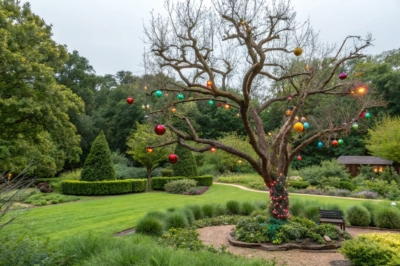1. Decorative Hanging Ornaments
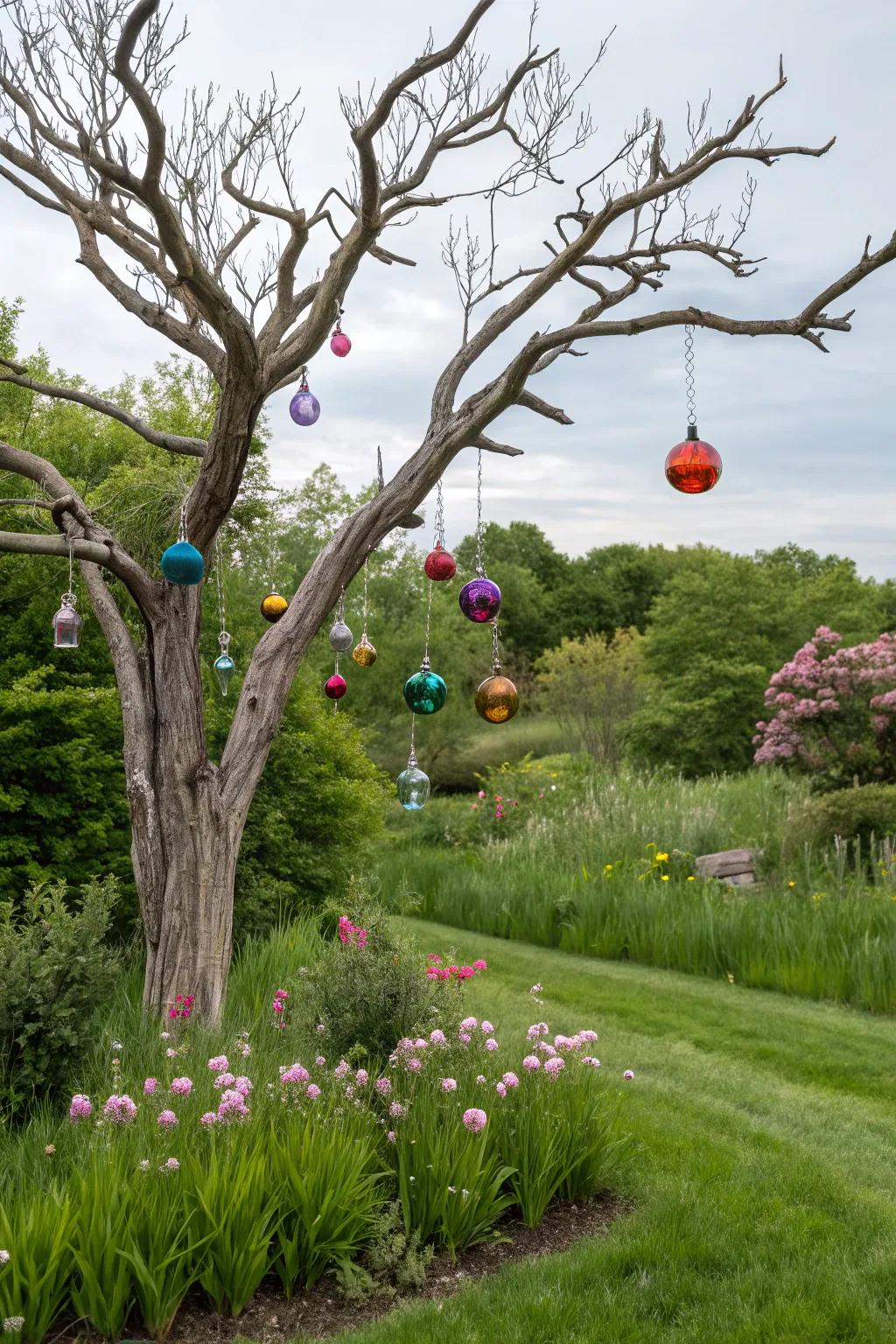
Consider using dead tree branches to hang colorful ornaments or twinkling lights. I did this with an old oak tree in my backyard, and it instantly became a magical focal point, especially during evening gatherings.
Check if these fit your needs:
- Colorful Hanging Glass Ornaments: Brighten your outdoor space with charming glass ornaments that catch the sunlight beautifully.
- Outdoor Solar String Lights: Add a touch of magic to your evenings with energy-efficient solar string lights.
- Weatherproof Hanging Lanterns: Create a warm ambiance with elegant weatherproof lanterns perfect for any garden setting.
2. Natural Privacy Screens
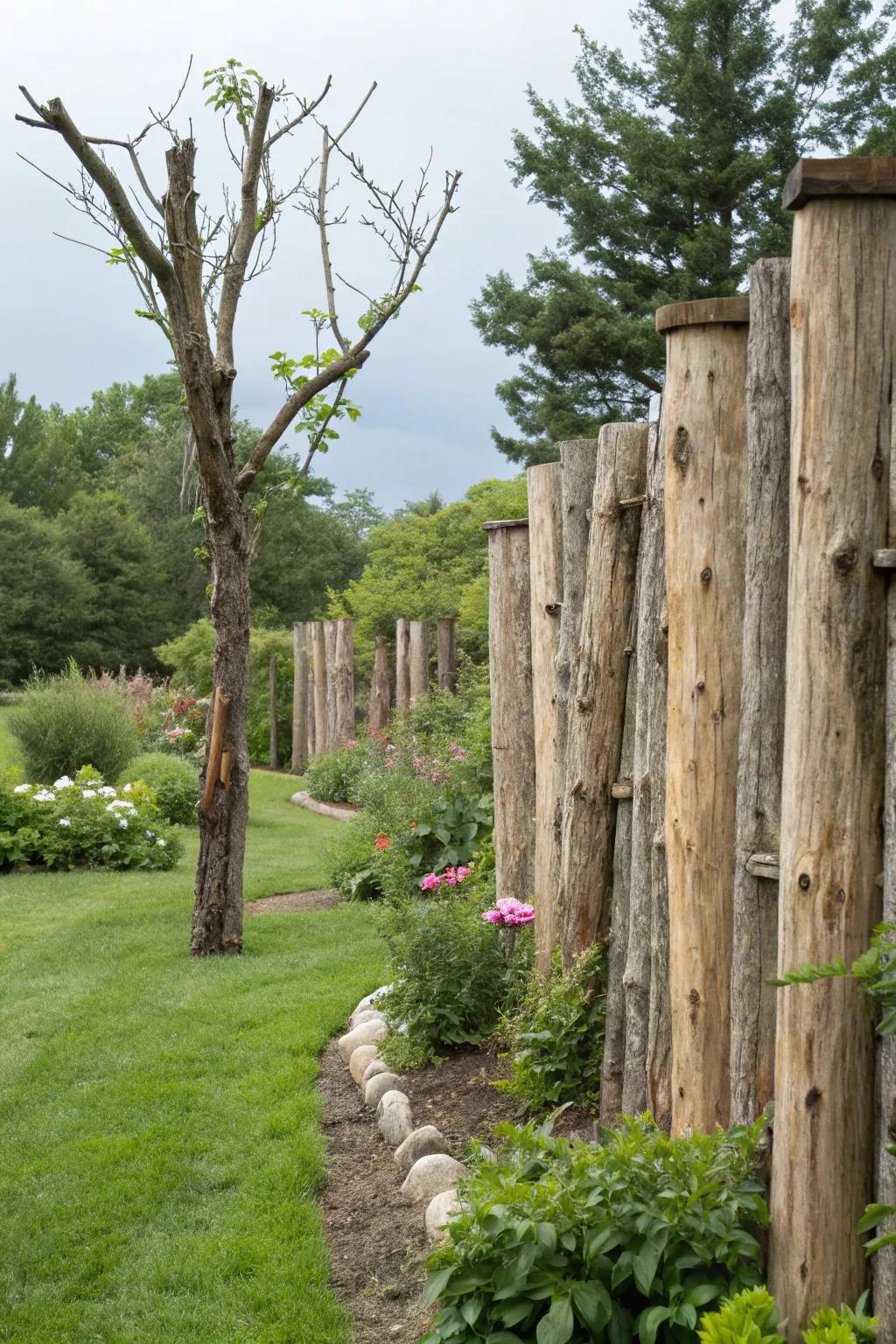
Use dead trees to create natural privacy screens. I arranged several trunks strategically, providing much-needed seclusion while maintaining a natural aesthetic.
A few suggestions:
- Exterior Wood Sealer: Protect your dead tree privacy screen with a durable wood sealer, enhancing longevity and aesthetics.
- Solar Garden Lights: Illuminate your natural screen with eco-friendly solar lights, adding charm and visibility to your landscape.
- Climbing Plants and Vines: Enhance privacy by adding climbing plants to your dead tree trunks for vibrant, natural coverage.
3. Whimsical Birdhouses
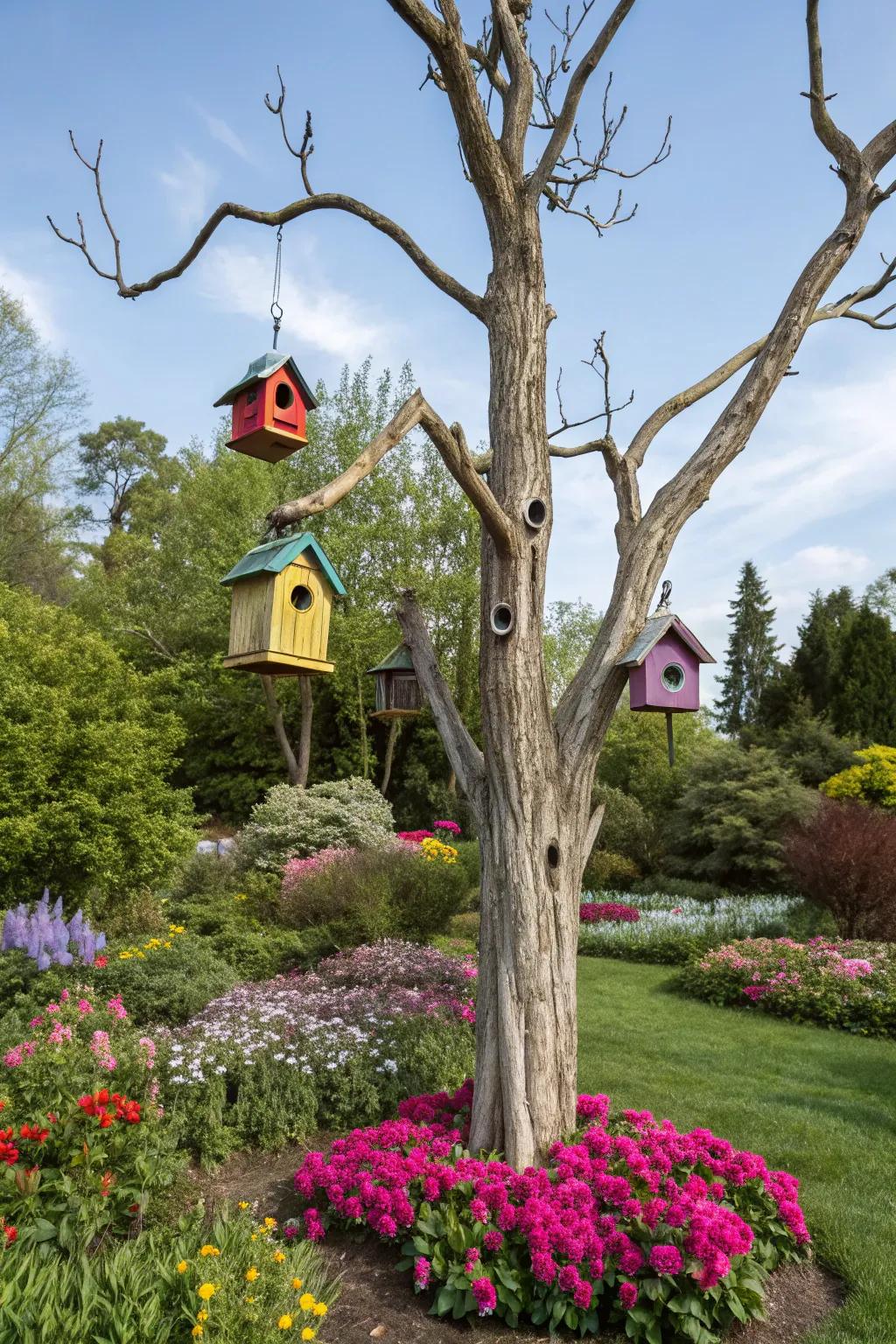
Add a touch of whimsy by attaching charming birdhouses to the branches. In my garden, these birdhouses attract delightful visitors, making the tree a lively hub of activity.
A few things you might like:
- Colorful Wooden Birdhouses: Enhance your garden’s charm with vibrant birdhouses, attracting delightful avian visitors all year round.
- Decorative Hanging Birdhouses: Invite playful birds to your garden with these beautiful hanging homes, adding life to any tree.
- Eco-Friendly Birdhouse Kits: Craft your own bird-friendly sanctuary. Perfect for adding a personal, whimsical touch to the garden.
4. Bottle Tree Displays

Craft a bottle tree by attaching colorful glass bottles to the branches. This quirky project brought vibrant pops of color to my landscape, delighting visitors.
Products that could assist:
- Colored Glass Bottles Set: Add vibrant color to your tree with this set of beautiful, multicolored glass bottles.
- Outdoor Bottle Tree Stand: Create a stunning display using a sturdy stand designed for showcasing colorful bottles outdoors.
- Solar-Powered Garden Lights: Illuminate your bottle tree at night with these easy-to-install solar-powered garden lights.
5. Support for Climbing Plants
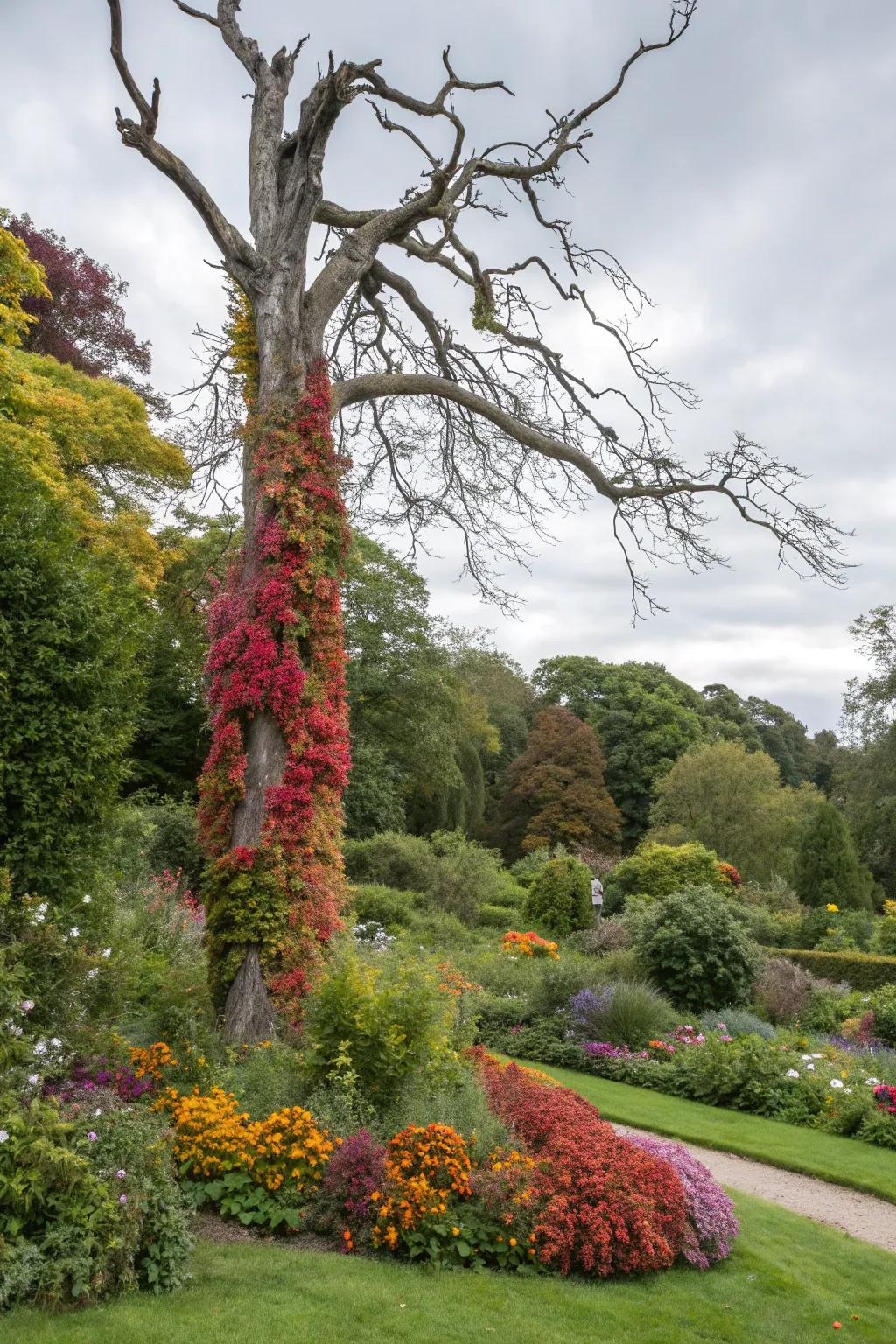
Turn your dead tree into a natural support for climbing plants like clematis or ivy. In my garden, a dead elm became the perfect trellis, bursting with blooms of colorful vines.
Consider these options:
- All-Purpose Gardening Twine: Easily guide climbing plants along your tree with durable, weather-resistant gardening twine.
- Organic Soil Enhancer: Boost plant growth naturally at your tree’s base with nutrient-rich organic soil enhancers.
- Climbing Plant Starter Kit: Kickstart your garden’s transformation with easy-to-plant climbers and essential care instructions.
6. Garden Trellises
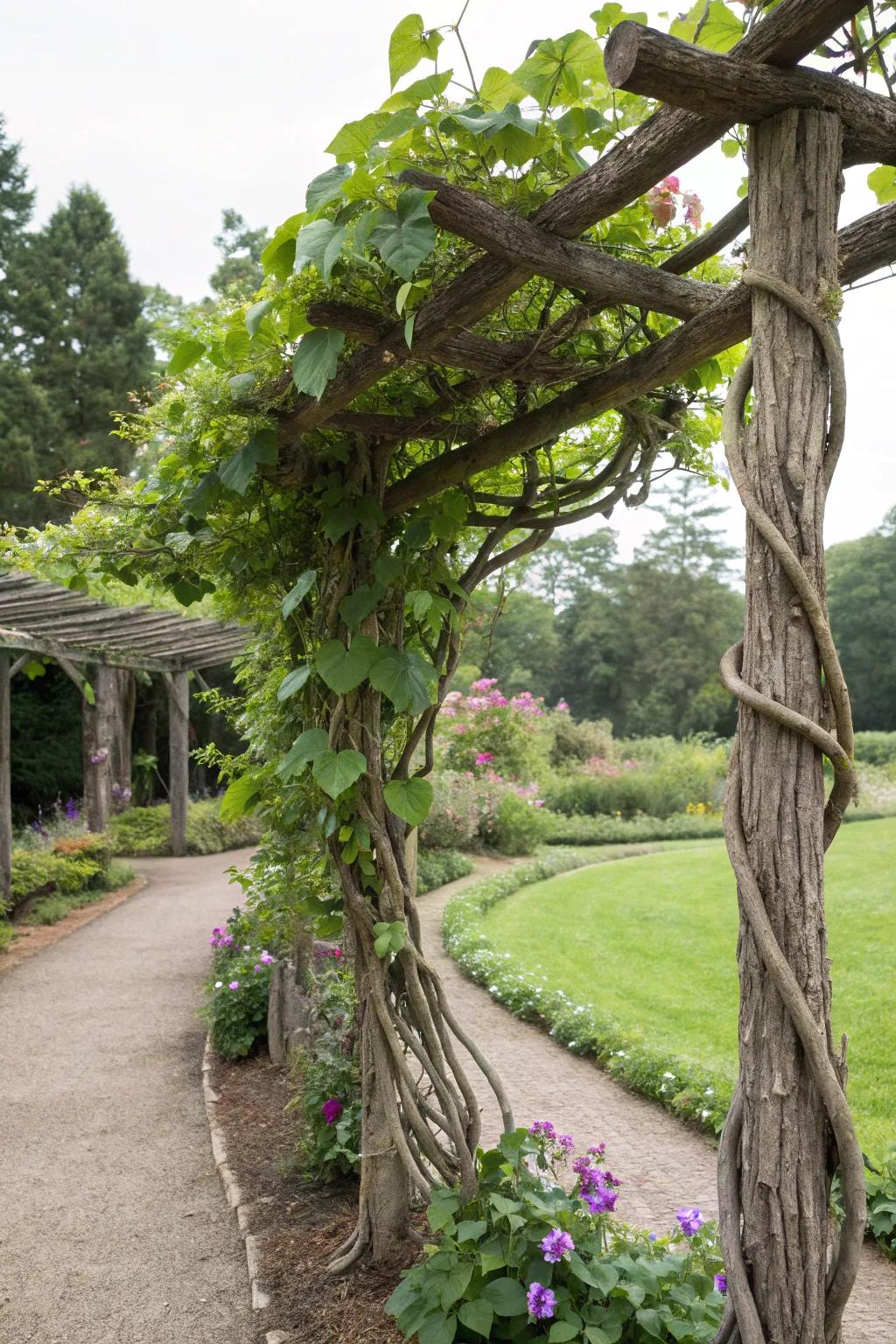
Use tree branches to create natural garden trellises. This simple project brought vertical interest to my vegetable patch, supporting climbing plants beautifully.
A few helpful options:
- Heavy-Duty Garden Twine: Secure plants to your trellis effortlessly with durable, weather-resistant twine. Perfect for climbing greens.
- Outdoor Wood Sealant: Enhance and protect wooden trellises with an easy-to-apply, weatherproof wood sealant for longevity.
- Climbing Plant Starter Kit: Start your vertical garden journey with an easy-to-use kit for vibrant cascading greenery.
7. Garden Benches from Tree Trunks
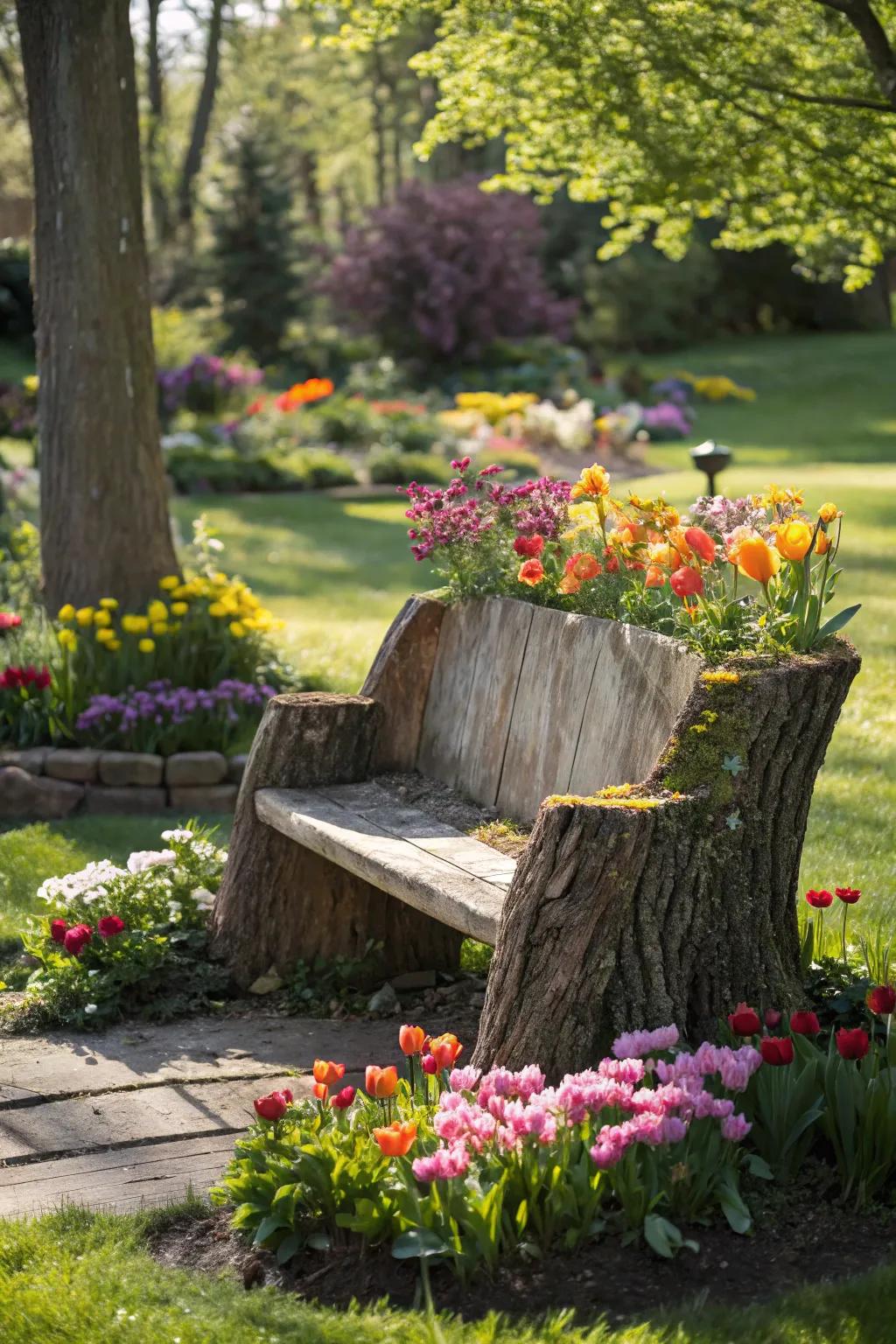
Craft a unique garden bench from a sturdy tree trunk. I created a cozy seating nook in my garden with a trunk bench, perfect for sipping coffee while enjoying the morning sun.
Try these:
- Eco-Friendly Wood Sealer: Protect your tree trunk bench from weather damage with this durable, eco-friendly wood sealer.
- Outdoor Cushion Set: Enhance comfort with a set of durable, weather-resistant outdoor cushions for your garden bench.
- Solar Garden Lights: Illuminate your tree trunk bench area with charming, energy-efficient solar lights for a magical touch.
8. Artistic Tree Sculptures
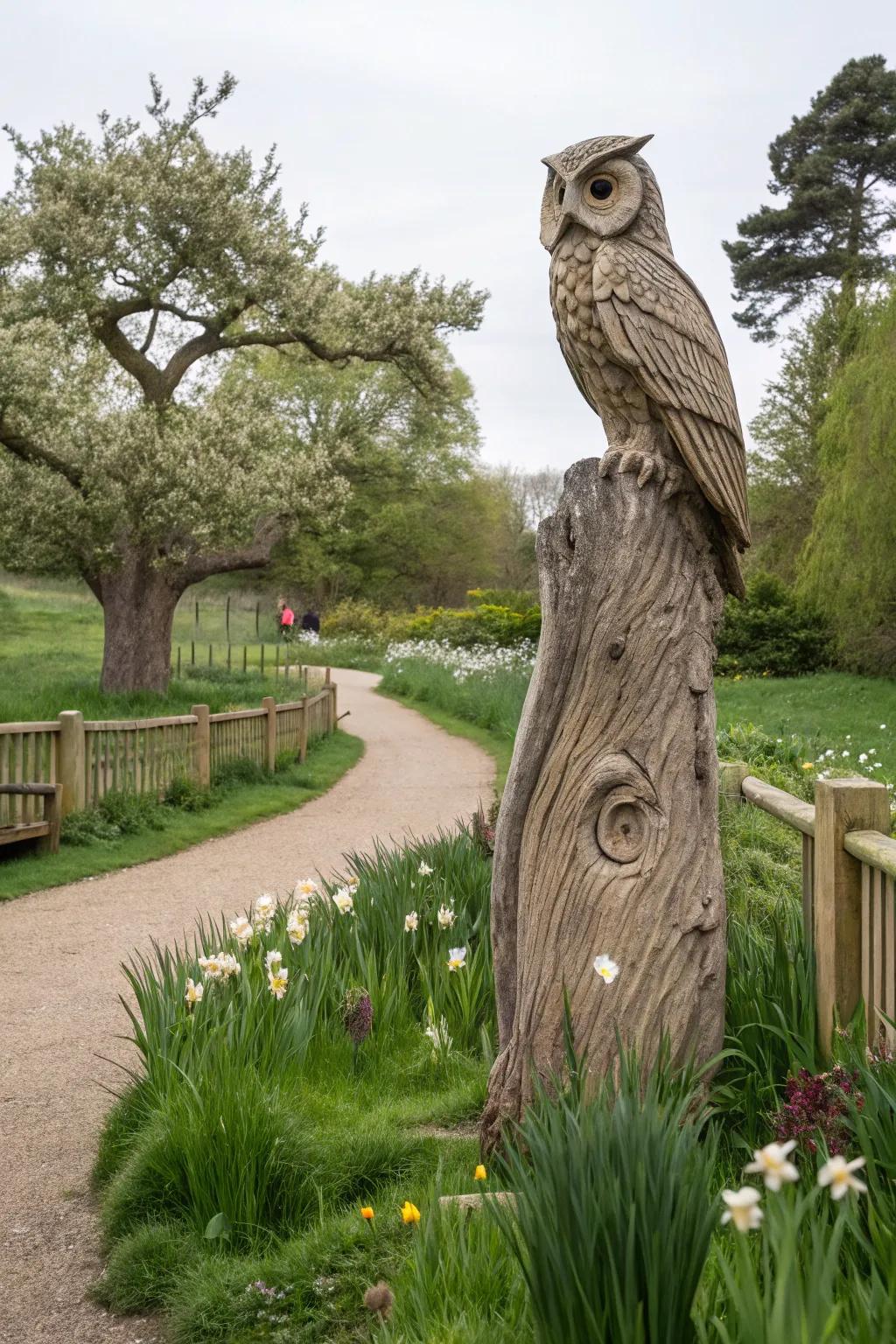
Unleash your inner artist by carving the tree trunk into a sculpture. A neighbor of mine turned their dead maple into a charming owl, adding a whimsical touch to their landscape.
Give these a look:
- Wood Carving Tools Set: Transform your tree trunk with precision using these versatile wood carving tools.
- Protective Wood Finish Oil: Seal and protect your sculpture with this durable and weather-resistant wood finish.
- Chainsaw for Wood Carving: Effortlessly carve detailed sculptures in your tree trunk with this specialized chainsaw.
9. Functional Planters
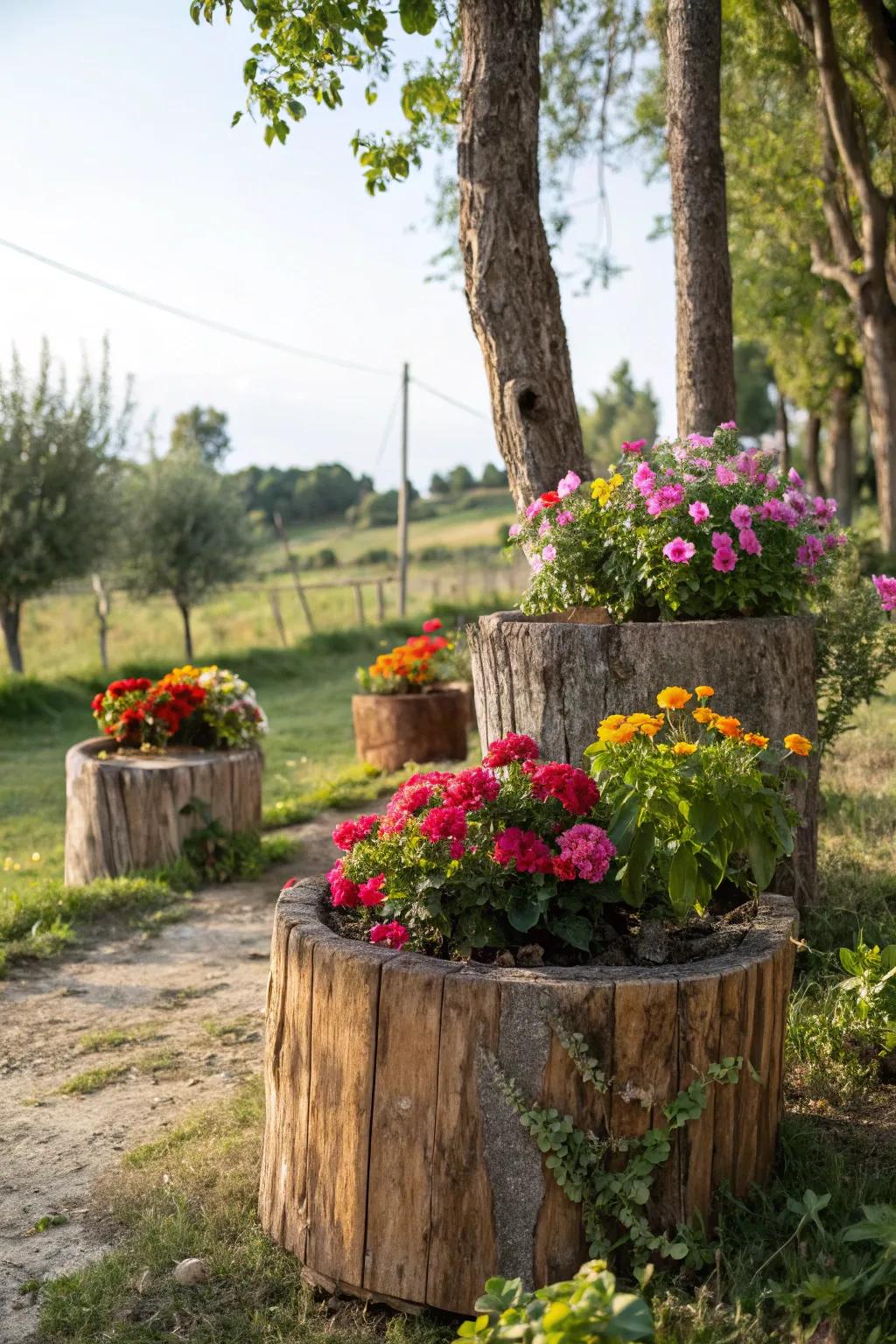
Hollow out sections of the tree trunk to create rustic planters. These planters add character to my garden, showcasing seasonal blooms beautifully.
A few choices to try:
- Wood Drill Bit Set: Easily carve out tree trunks for planters with a reliable wood drill bit set.
- Outdoor Wood Sealant: Protect your rustic planters from weather damage with a high-quality outdoor wood sealant.
- Gardening Soil Mix: Enhance plant growth in your tree trunk planters with nutrient-rich gardening soil.
10. Carved Stepping Stones

Transform tree trunk rounds into stepping stones for a garden path. I love the organic feel these stones gave to my garden, adding texture and interest.
May just do the trick:
- Wood Preservative Sealer: Protect your tree trunk rounds from weather damage and extend their life in your garden.
- Garden Pathway Lighting: Enhance your stepping stone path with elegant lighting for safer nighttime garden strolls.
- Weed Barrier Fabric: Prevent weeds and maintain a clean look under your tree trunk round stepping stones.
11. Customized Yard Signage

Turn segments of the tree trunk into personalized garden signs. I made signs with plant names and directions, adding a personal touch to my garden paths.
A few relevant products:
- Wood-Burning Tool Kit: Create elegant wood-burned signs with this kit. Personalize your garden markers effortlessly.
- Outdoor Wood Sealer: Protect your wooden signs from the elements with this durable and effective sealer.
- Acrylic Paint Set for Wood: Add vibrant colors to your garden signs with this weather-resistant acrylic paint set.
12. Rustic Fencing
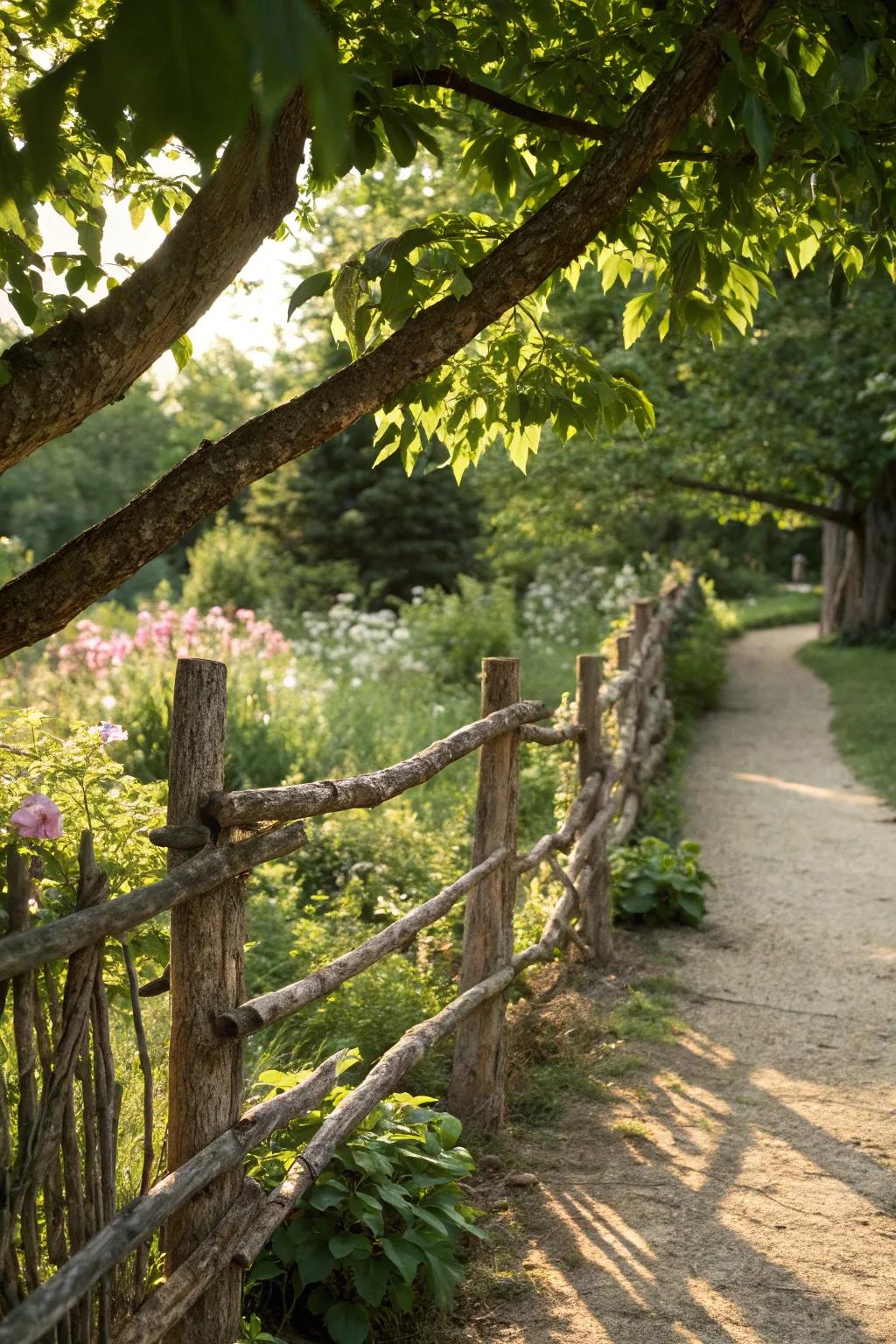
Construct a rustic fence using tree branches. This project added charm and structure to my garden, creating a lovely boundary without feeling enclosed.
Check these products out:
- Natural Tree Branches: Enhance your garden’s charm with natural branches, perfect for rustic fence construction.
- Rustic Fence Posts: Add sturdy structure to your garden fence with these durable rustic fence posts.
- Outdoor Wood Preservative: Protect your rustic fence from the elements with high-quality outdoor wood preservative.
13. Moss and Fern Accents

Enhance the natural beauty of a dead tree by adding moss and ferns. This approach brought a lush, woodland feel to my backyard, creating a serene escape.
Items that may come in handy:
- Live Moss for Gardens: Bring a lush, vibrant touch to your tree with easy-to-grow live moss. Transform your space.
- Fern Plant Set: Add rich greenery with ferns, perfect for enhancing your woodland-inspired tree landscape.
- Garden Soil for Moss and Ferns: Ensure optimal growth for your moss and ferns with nutrient-rich garden soil.
14. Natural Garden Borders
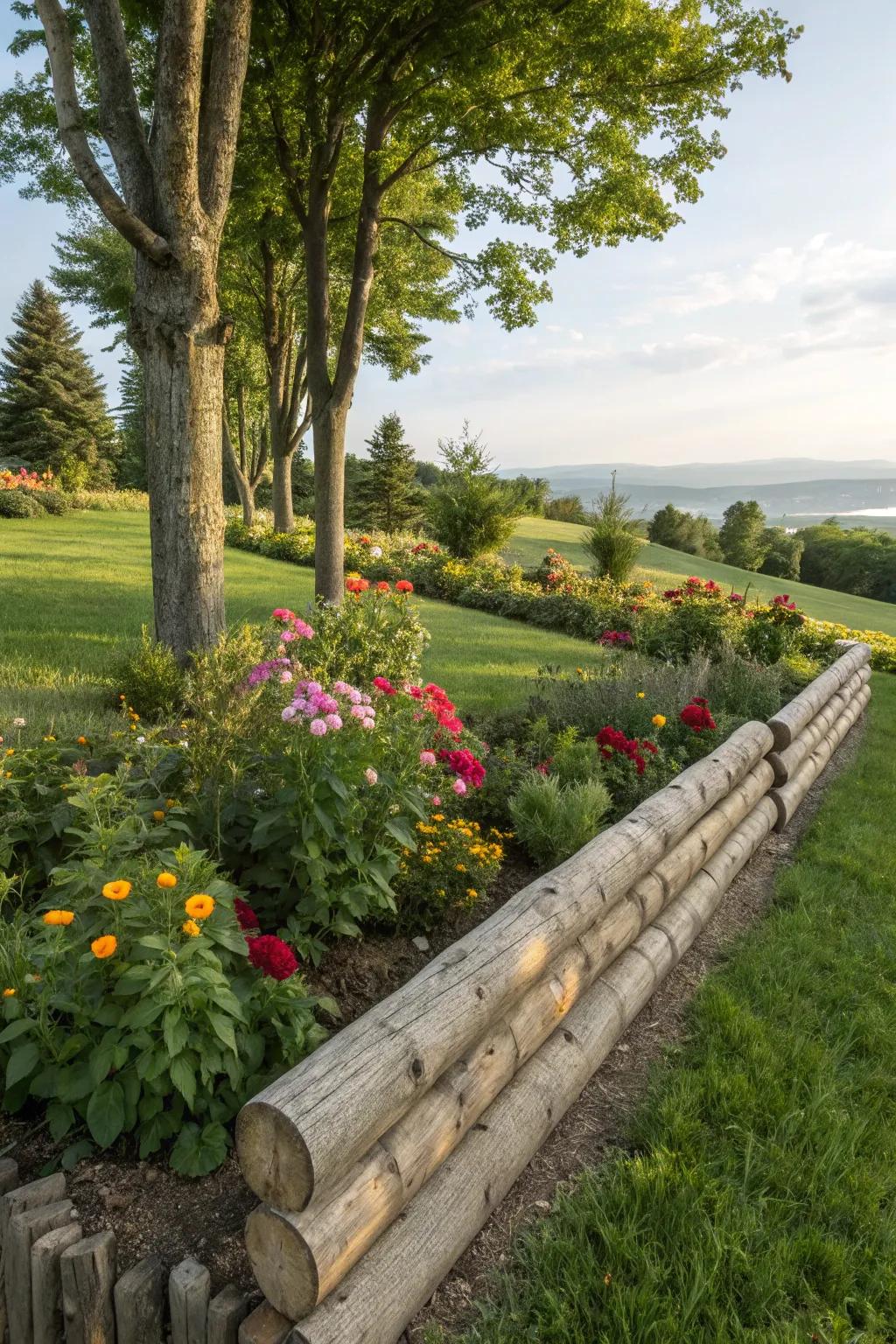
Lay tree trunks on their sides to form natural garden borders. This technique helped me create defined spaces in my garden, while blending seamlessly with the surroundings.
These products might help:
- Wooden Garden Edging: Enhance your garden’s look with natural wooden edging, blending beautifully with outdoor environments.
- Garden Border Stakes: Secure your garden borders effectively with durable stakes, ensuring long-lasting boundary support.
- Eco-Friendly Garden Mulch: Complement your garden’s natural borders with eco-friendly mulch for added texture and aesthetics.
15. Pathway of Tree Rounds
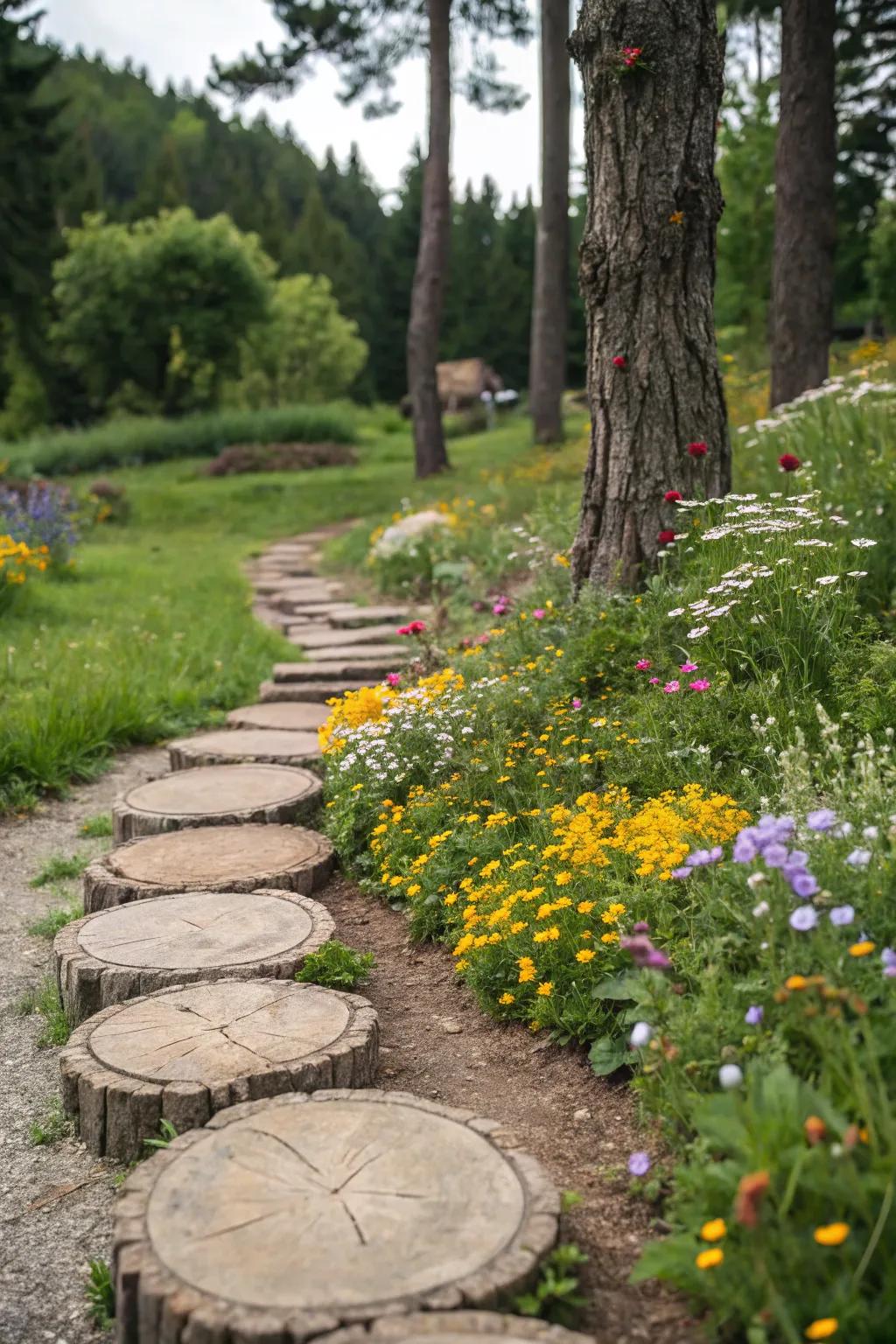
Create a unique garden pathway using slices of the tree trunk. I laid out rounds to weave a charming path through my wildflower patch, adding rustic charm to the landscape.
Useful items to consider:
- Natural Wood Tree Slice Stepping Stones: Enhance your garden path with durable wood slices for a rustic, natural look.
- Garden Pathway Edging Spikes: Secure your pathway with easy-to-use spikes, ensuring stability and neatness.
- Landscape Fabric Roll for Gardens: Install under your tree rounds to prevent weed growth and maintain tidy pathways.
16. Hanging Mobiles
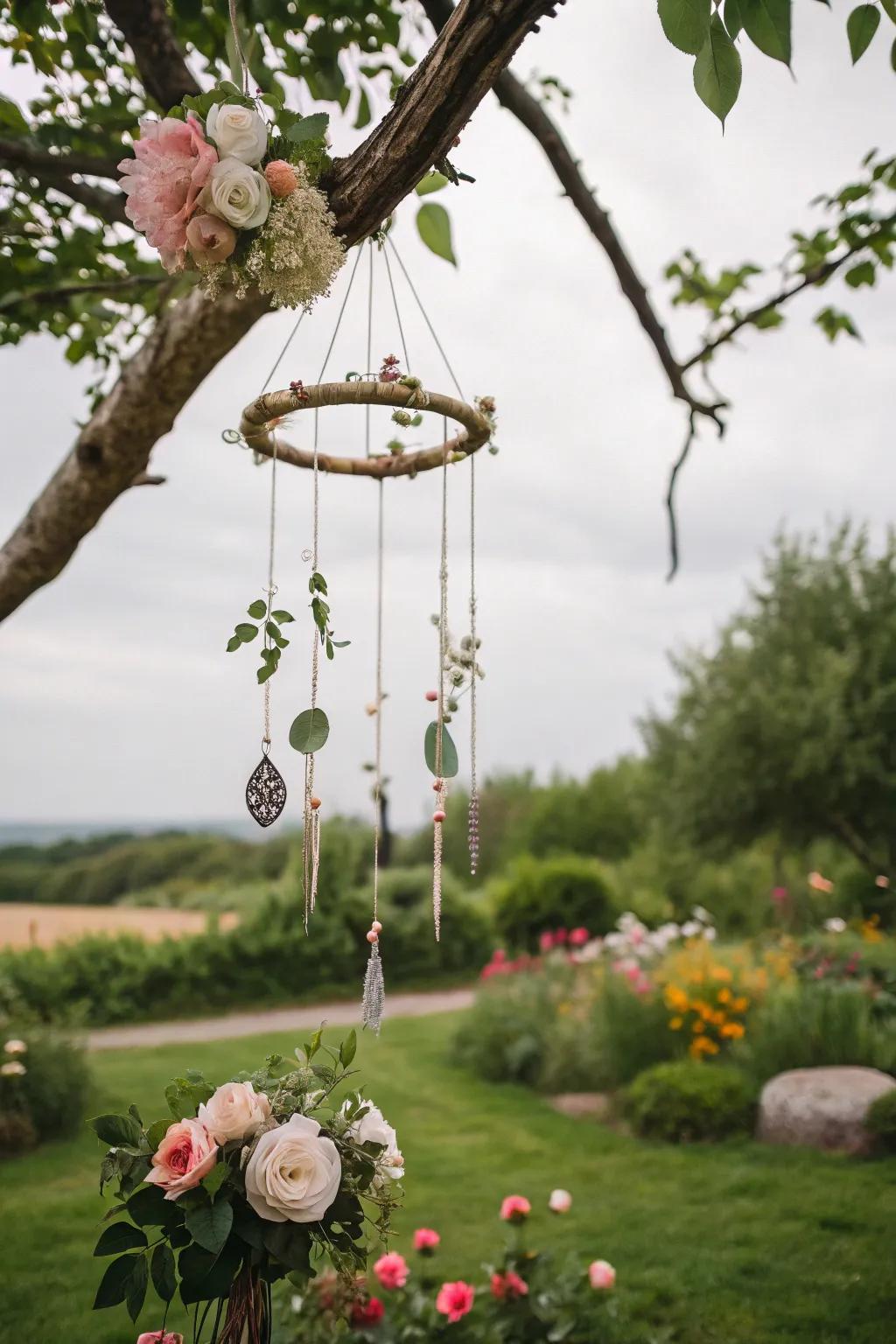
Craft a mesmerizing mobile from tree branches and natural elements. I hung one on my porch, and it adds a delightful musical note to breezy days.
Explore these options:
- Natural Driftwood Pieces: Create your own rustic mobile with these eco-friendly driftwood pieces, perfect for natural decor.
- Decorative Beads Assortment: Add a colorful touch to your mobile with this assorted collection of decorative beads.
- Metal Hanging Ring: Provide structure for your mobile with a sturdy metal ring, ideal for crafting projects.
17. Insect Hotels
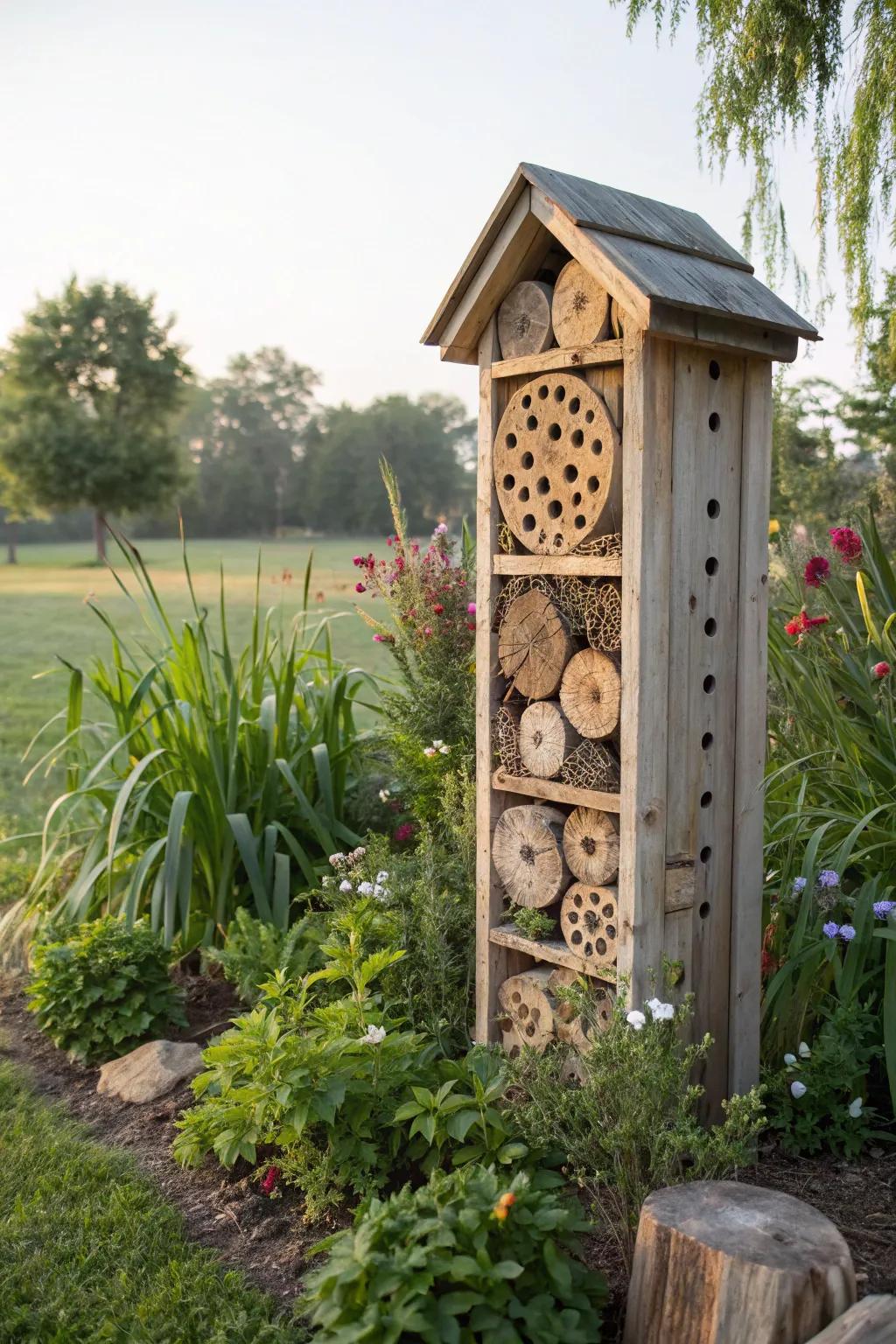
Drill holes into dead tree branches to create insect hotels. This eco-friendly project supports beneficial insects and has become a fascinating feature in my garden.
You might give these a try:
- Wooden Insect Hotel Kit: Create a thriving insect habitat by assembling this easy-to-build wooden insect hotel kit.
- Electric Drill with Bit Set: Effortlessly drill precise holes into branches using this versatile electric drill and bit set.
- Natural Bee Attractant: Enhance your insect hotel by attracting bees with this effective natural attractant.
18. Natural Pergola
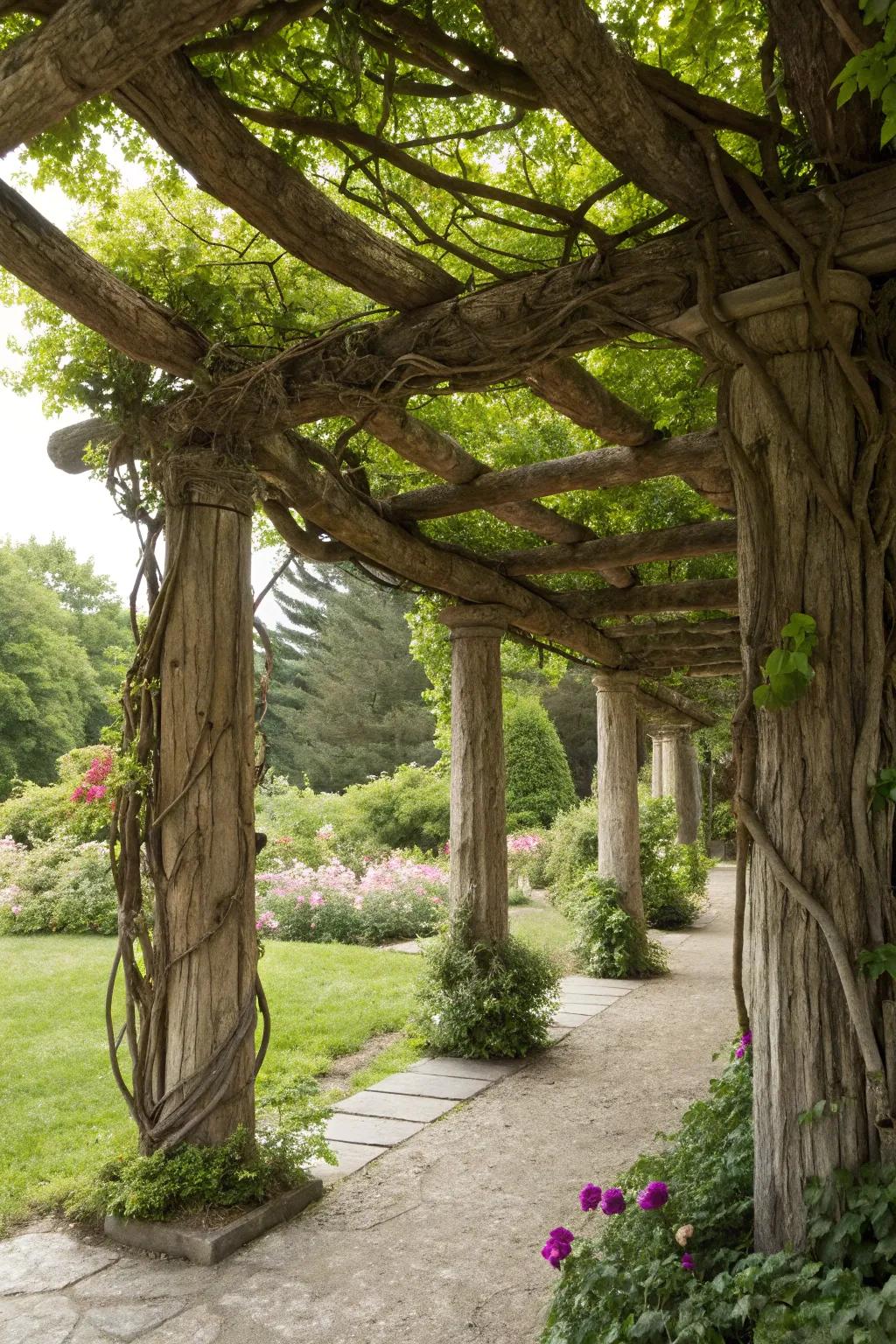
Construct a stunning pergola using tree trunks and branches. This project transformed my patio into an enchanting retreat, providing shade and a lush canopy.
Some ideas to consider:
- Heavy-Duty Wood Screw Kit: Securely assemble your pergola using these reliable screws designed for outdoor wood projects.
- Weatherproof Wood Stain: Protect and enhance the natural beauty of your pergola with long-lasting wood stain.
- Climbing Plant Support Clips: Encourage vine growth with these durable and discreet plant support clips for your pergola.
